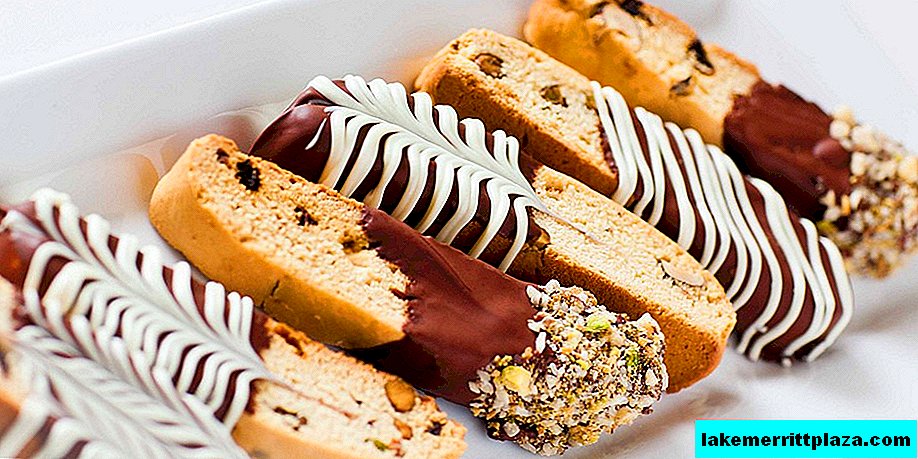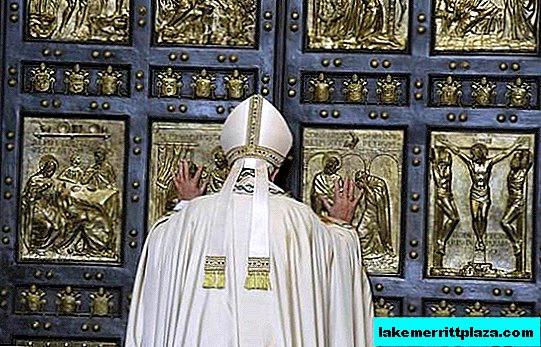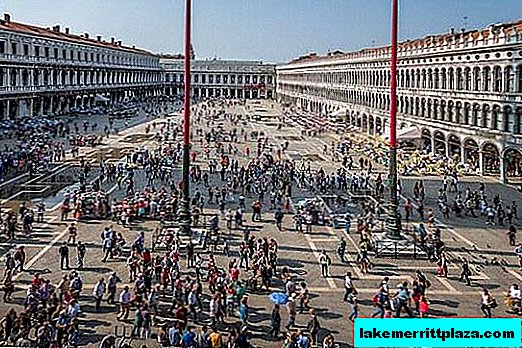Until the 20th century, the history of ancient sculpture was built in chronological sequence - first Greece (the heyday of art of the 5th-4th centuries BC), then Rome (the peak of the rise of the 1st-2nd centuries BC). The art of Ancient Rome (Roma) was considered a late expression of Greek cultural traditions, the completion of the work of the period of antiquity.
After the publication of works by art critics Ranuccio Bianchi-Bandinelli, Otto Brendel, antiquologists recognized Roman art as a distinctive and unique phenomenon. The sculpture of ancient Rome began to be regarded as a school of classical craftsmanship, the history of which has not yet been written.
The formation of Roman art (VIII - I centuries. BC. E.)
In the VIII century. BC e. ancient Roman masters pushed off from the traditions of Hellenic sculptors and began to master independent creativity.
The history of ancient Roman art is divided into four stages:
- The most ancient era (VIII-V centuries BC)
- Republican era, the period of formation (V - I centuries. BC. E.)
- The heyday of Roman imperial art (I - II centuries AD)
- The Age of Crisis (3rd - 4th centuries AD)
The origins of ancient Roman sculpture are the art of Italians and Etruscans, who created original cultural monuments. The most famous artifact is the warrior from Capestrano (Guerriero di Capestrano).
Sculptors of the most ancient era created portrait images, stone bas-reliefs, which differed from Greek works in the average quality of execution.
The temple terracotta sculpture with decorative and religious functions was developed. Large statues of gods appeared, exceeding the size of Greek statues. In 1916, magnificent terracotta statues of Apollo, Hermes, Venus were found on the territory of the ancient city of the Etruscans Veii, which were created for the external decoration of the temple of Apollo (550 - 520 BC).
Features of Ancient Roman Sculpture
Roman masters departed from the traditions of Greek sculptors and did not create the images of an ideal person. Individuality goes through the whole history of the Roman portrait, which is based on the religious custom of creating posthumous masks.
Patricians had the right to keep in their homes the appearance of a deceased ancestor. The more portraits, the more noble the clan. This explains the characteristic features of Roman sculpture: realism, concreteness, knowledge of facial expressions and facial muscles.
The work is distinguished by emotional coldness and detachment. The open plasticity of Greek sculptures is opposed by the image of a Roman, who covered his head with the edge of his clothes during prayer.
Hellenic masters saw the type of man: athlete, philosopher, commander. Roman sculptors created portraits in the spirit of ultimate naturalism, concretized the qualities of a person’s character, his individual characteristics.
To the Greek samples of plastic art (statue, herme) sculptors of Rome add a new form of portraiture - a bust.
The sculptor Hellen linked creativity with a poetic myth. The Roman sculptor perceives the world in distinct forms.
Unlike the Greeks, in the period of the Late Republic (264 - 27 BC), the Romans did little to monumental sculpture. Preference was given to bronze statuettes of outstanding figures and gods.
Senate decrees regulated the size, material, character of the statue. Equestrian and armored portrait could be established only in case of military triumph. The task of the sculptors was to capture the family, tribal traits, social rank and status of the Roman.
Many works are identified or have an inscription on a pedestal with information about the model, but the names of ancient Roman portrait painters were not preserved.
Types and genres
The sculpture of ancient Rome consists of two types:
- Relief ("high" - high relief; "low" - bas-relief).
- Round sculpture (statue, bust, composition, figurine)
Scientists of the complex science of antiquity identified the main genres of Roman sculpture:
- historical;
- mythological;
- allegorical;
- symbolic;
- battle;
- portrait.
One of the main types of fine art in Rome is relief. Masters are inclined to analysis, a detailed image of images, reliably record historical events. The main fence of the Altar of Peace in Rome (13 - 9 years BC), the reliefs of the imperial period - the arches of Trajan in Benevento (114 - 117 years) are recognized as a masterpiece of the early principate's time.
Features of the heyday sculpture
The change of imperial dynasties influenced the stylistic features of ancient Roman sculpture.
Principate Augustus
Anticologists call the time of the reign of Octavian, nicknamed Augustus (Octavianus Augustus), the "golden age" of the Roman state (27 BC - 14 AD).
Greek sculpture of the classical period with strict forms serves as an example for the ruler in creating a magnificent empire. In portrait sculpture, individual features are smoothed out. A typical standard is the overall appearance, pleasing to the principal.
The idealization of the image is clearly visible in the statues installed on the forum, in front of the Pantheon (Panthevm), the Roman temple of Mars the Avenger (Tempio di Marte Ultore nel Foro di Roma). In 1863, a two-meter-tall bronze statue, commissioned by the Roman Senate, was found at Prima Porta.
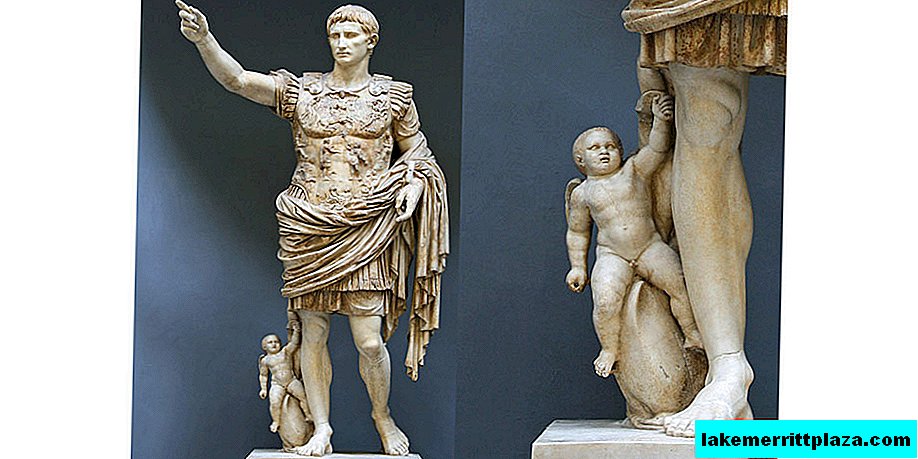
Augustus is represented by the majestic descendant of the gods, at whose feet Amur is located on a dolphin. The relief on the shell tells the people about the emperor’s victories in numerous battles. (Chiaramonti Museum - Museo Chiaramonti - Vatican City).
Masters create independent female portraits. For the first time, sculptural images of children appear. Pictured on the left relief of the Altar of Peace (Ara Pacis), the beautiful Goddess of the Earth Tellus (Tellus) holds on her knees two babies surrounded by figures of well-fed animals.
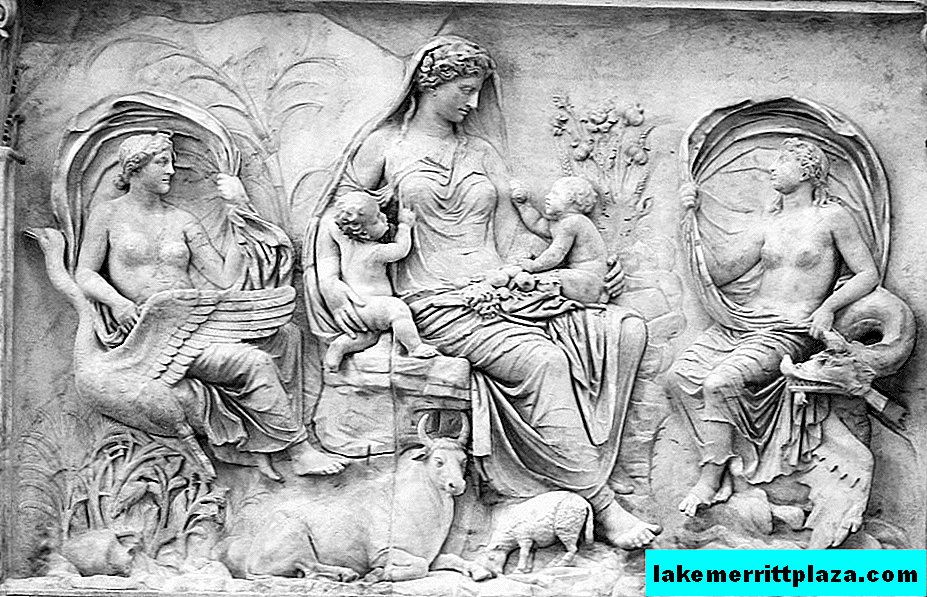
Art is called to exalt the prosperity of Rome under the first emperor.
- I advise you to read about: the rise of Octavian
Time Yuliev - Klavdiev (27 - 68 years BC) and Flaviev (69 - 96 years BC)
During the reign of Yuliev - Klavdiev and Flaviev, monumental sculpture comes to the fore. The glorification of power led to the fact that the masters gave even the gods the characteristic features of emperors.
For the first time in portraits, realism appears. For example, the statue of Claudius (Tiberius Claudius Caesar Augustus Germanicus) consists of two different parts: a head with a realistic image of the aging face of the great pontiff and an ideal figure of the Greek god Jupiter.
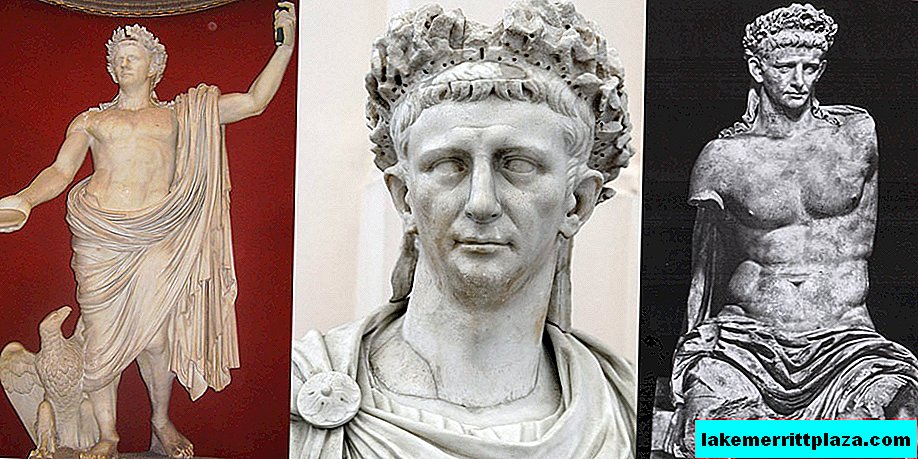
The appearance of the ruler is shown using volumetric sculpting: a wide forehead with wrinkles, a flabby face, protruding ears.
The new style replaced the smoothness of individual features of portrait busts with a realistic depiction of Roman emperors. In marble portraits, paints are used for tinting lips, eyeballs are tinted with ivory. In bronze busts to give shine to the eyes, semiprecious stones are inserted into the pupils (portrait of the cunning pawnbroker Pompeii Cecilia Yucunda).
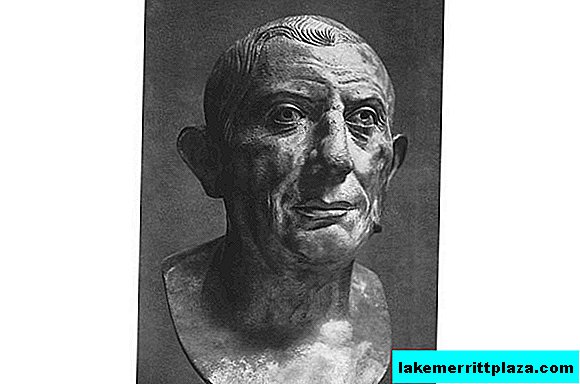
The genre of female portrait is developing in two directions: classic and “veristic”. Merciless truthfulness is reflected in the portrait of an elderly Roman woman (Vatican Museums, Gregorian Secular Museum - Museo Gregoriano Profano).
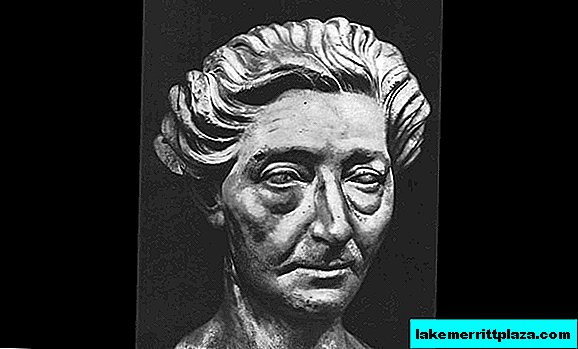
A thin, restless face, a wrinkled forehead, bags under watery eyes speak of impending old age. The female image is presented differently in the statue of a stranger found at the ancient gate of St. Sebastian (Porta San Sebastiano).
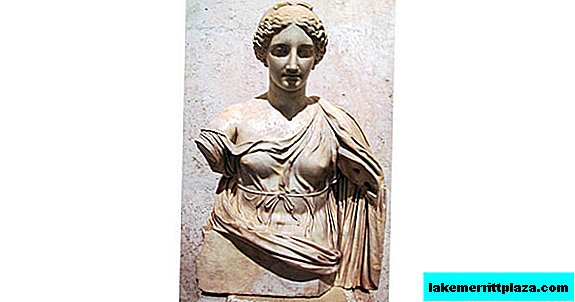
The half-naked Roman is depicted by Aphrodite. The woman proudly bent the camp, akimbo, put forward her leg, covered with a fixed fabric. The portrait head of a middle-aged, imperious Roman woman does not match the ideal figure of the goddess (Vatican. Capitoline Museums - Musei Capitolini).
The time of Trajan (98-117) and Adrian (117 - 138 gg.)
During the reign of Emperor Trajan and Hadrian, sculpture continues to express the greatness of the Empire. The use of different forms determined two stages of artistic development: Trajan and Adrian.
Emperor Traian (Marcus Ulpius Nerva Traianus) returns to the traditions of the Republic. From sculptors are required to change the lush decor to cold dry forms. Sculptors glorify Trajan as an outstanding commander and ruler.
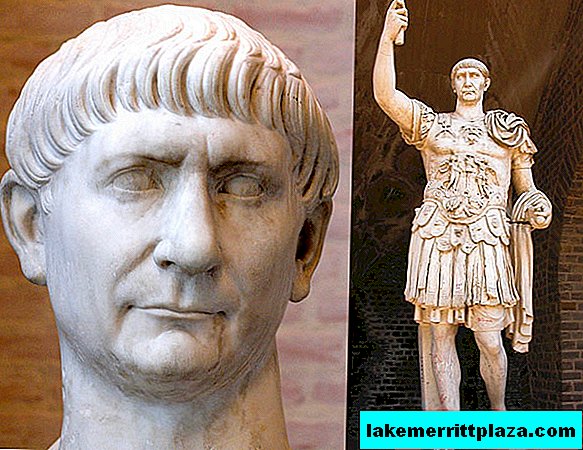
The heroic interpretation of the image is in tune with official ideas. Portrait style is characterized by a lack of emotionality. The images remain expressive, magnify the stern, ascetic, devoted to the state man. A new kind of plastic art appears - the “big bust”. Three-dimensional forms are used only in portraits of Trajan.
The Roman emperor Hadrian (Publius Aelius Traianus Hadrianus) focused on the art of ancient Greece.
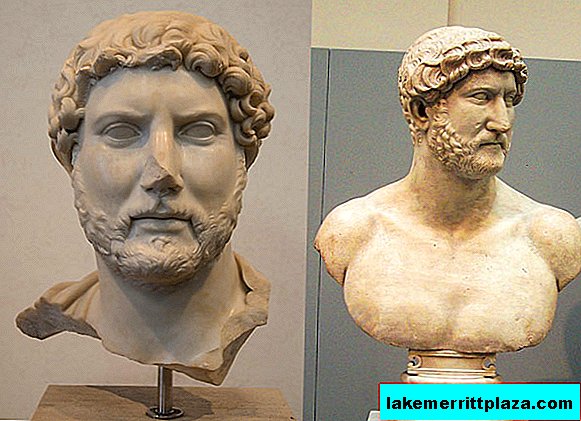
Sculptors represent harmonious and perfect images in their works, like those of the Hellenes. The plots are changing, the mythological interpretation of images, nudity plastic is intensifying. The reliefs depict scenes of hunting, sacrifices to the gods. The main characters are the emperor and his favorite Antinus. The young man is portrayed as a deity or a hero of myths. In portraits, the individuality, physiognomic accuracy of the faces disappears. Sculptors often portray the emperor Aristotle.
- I advise you to read about: columns of ancient Rome
The time of the last Antoninov
During the reign of Emperors Antoninus Pius (Titus Aurelius Fulvus Boionius Arrius Antoninus Pius, 138 - 161), Marcus Aurelius (Marcus Aurelius Antoninus, 161 - 180), Commodus (Lucius Aelius Aurelius Commodus, 180 - 192) Portrait blooms. The rise of creativity lasts one and a half centuries. An equestrian statue appears, which becomes the standard for subsequent equestrian monuments in Europe.
Staturative plasticity shows the individuality of a person, his spiritual strength. Portraits of Antoninus Pius, Marcus Aurelius give the image a psychological description (philosophical reflection, skepticism, anxiety). Masters use expensive materials: gold, silver, rhinestone. Portrait painters use a special technique, likening an artistic image to a real one.
To create a volume of curls of hair, a drill is used, while polishing the surface of the face, a game of chiaroscuro is used. For example, a portrait of a Syrian from polished marble seems like a gem.

Irregular facial features are invisible from the radiance of the woman’s inner beauty, subtly conveyed by the sculptor (the work is stored in the Hermitage).
The Age of Crisis (3rd - 4th centuries AD)
The contradictions between imperial ideology and reality are escalating. The slogans of power about freedom, happiness, equality become irrelevant in the conditions of a crumbling empire. The halo of the emperor as a representative of divine authority falls. The style of Roman sculpture is changing:
- antique ideas are replaced by new, Christian ones;
- rarely create female and child portraits;
- sculptors refuse to idealize images (portrait of Nero);
- dominated by wariness, suspicion, tragedy.
The most famous works
Bloody events erased the names of sculptors. Only the Etruscan master Vulka, who worked at the end of the VI-V centuries BC, is known. and mentioned by the encyclopedic writer of antiquity Pliny.
Capitoline wolf
Bronze sculpture made in the 5th century BC. The Etruscan art monument depicts a she-wolf (Lupa Capitolina) feeding two babies with milk.
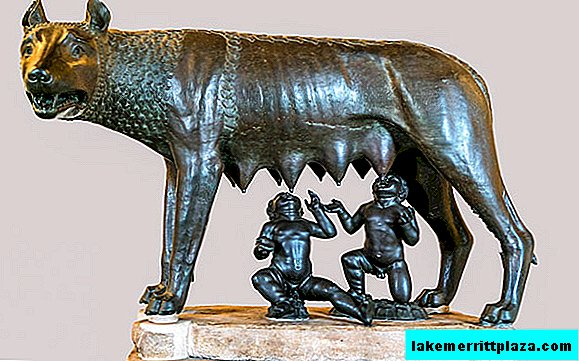
The future founders of Rome, whose parents were the god of war Mars and the vestal Sylvia, became hostages of the struggle for power. Romulus and Remus, thrown into the Tiber, were found and nurtured by a she-wolf, who is called the "mother of Rome." The legendary sculpture with the wrong proportions, the primitivization of the plot is distinguished by sharp dynamics and temperament. The dating of the sculpture of the Capitoline she-wolf causes controversy among scientists. It is believed that cast bronze images of twins made in the XV century. The authorship of the work is attributed to the Florentine Renaissance sculptor Antonio del Pollaiolo (Antonio del Pollaiolo). The main symbol of the city is kept in the Roman Capitoline Museums (Musei Capitolini).
Splinter boy
Splinter Removing Boy (Spinario) - a bronze sculpture by an unknown author was created in the middle of the 1st century. BC e., is a copy of the Greek statue.
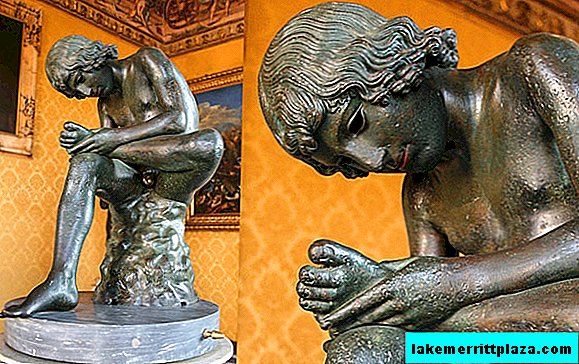
Historians interpret the image of a boy pulling a splinter in different ways:
- the Spartan runner, overcoming the pain, was the first to finish;
- a shepherd from the province was sent with news of the impending attack of the enemies on the Capitol.
Having completed a noble mission, the teenager gets rid of the painful spike.
The author of the genre statue depicts a naked boy with a beautiful muscular body, whose face does not express suffering. The plot is conveyed not by the drama of the event, but by a volitional beginning. Samples of the most copied sculpture are in various museums around the world. The original is on display at the Capitoline Museums of Rome (Hall of Celebrations).
I advise you to visit: a tour of the Capitoline Museums
Laocoon and sons
The marble sculptural composition depicts the mortal struggle of Laocoon, the priest of the god Apollo, and his sons with snakes.
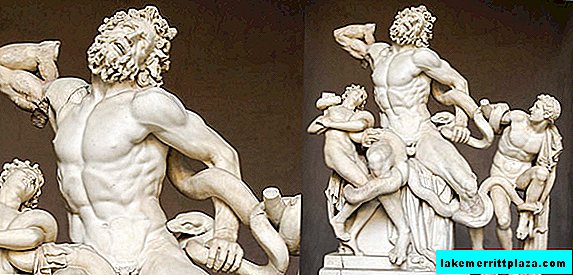
The work was created in 50 g. I century BC. Oe., is a copy of the unreserved bronze monument of Greek sculptors (Pergamum, 200 BC). Michelangelo Buonarroti (Michelangelo Buonarroti), sent by Pope Julius II to evaluate the find, confirmed the accuracy of the work and noted the incredible dynamism and plasticity of the creation of the ancient Roman sculptor. One of the most famous sculptures of ancient Rome is kept in the Museum of Pio-Clementino (Museo Pio-Clementino), Vatican.
Etruscan Canopy from Chiusi
Clay urn of the 6th century BC is an example of monuments of the funeral cult.
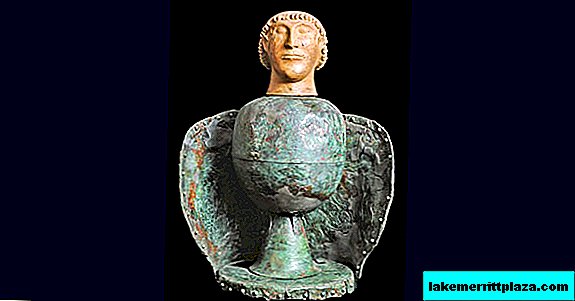
The cover is made in the form of a human head, decorated with a bronze mask (Canopus Chiusi). The Etruscan master tried to preserve the appearance of the deceased: large features, a large nose, narrow lips, straight hair drawn in clay. Portrait resemblance was the key to otherworldly immortality. The handles of the ritual vessel are made in the shape of human hands. The desire to create a reliable image became the basis for the appearance of the Etruscan portrait (Paris, Louvre Museum - Musee du Louvre).
Warrior from capestrano
Antique statue of the 6th century BC (found in 1934) depicts a calmly standing warrior (Guerriero di Capestrano) of the Pitsen tribe.
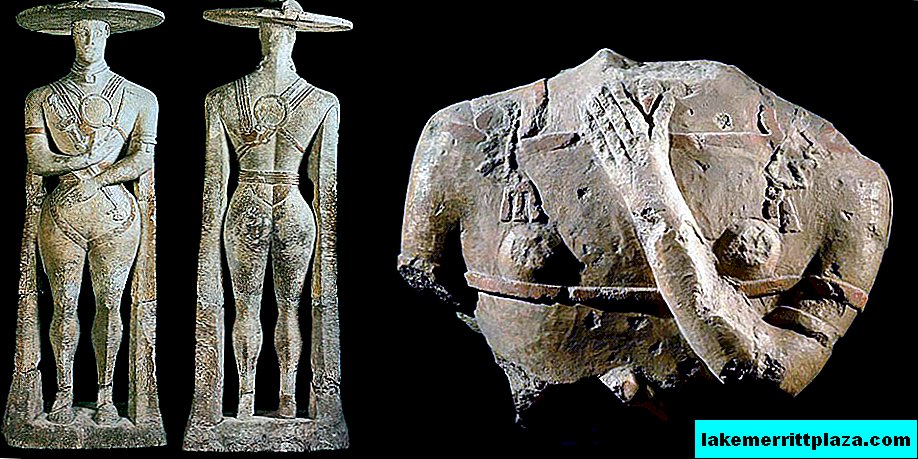
The author departs from a characteristic example of ancient Greek plastic - Kuros (a statue of a young athlete), taking a step with his left foot. Other than the Greeks, the unknown sculptor depicts a figure with exaggerated massive hips, broad shoulders, a mask on his face, a helmet with fields of incredible sizes. The construction of a three-dimensional shape with side columns, gaps between the calves of the legs and the waist convinces us that the statue of a warrior on a pedestal belongs to a round sculpture. An ancient artifact is exhibited at the National Archaeological Museum of Chieti.
Winged terracotta horses
The decor of the Temple of Ara della Regina (Dell'Ara della Regina) in Tarquinia was made in the IV century BC.
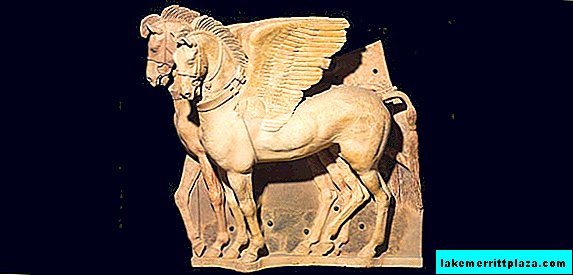
The figures of horses mounted on the pediment of the religious building arched their necks, spread their wings, kicked their legs in readiness to carry the divine horseman skyward.Fabulous creatures are close to real images due to muscle tension and nervousness of movements. Winged horses can be seen at the National Archaeological Museum of Tarquinia.
Chimera from Arezzo
A chimera from Arezzo, made in the 5th century BC, is considered the pinnacle of ancient bronze casting.
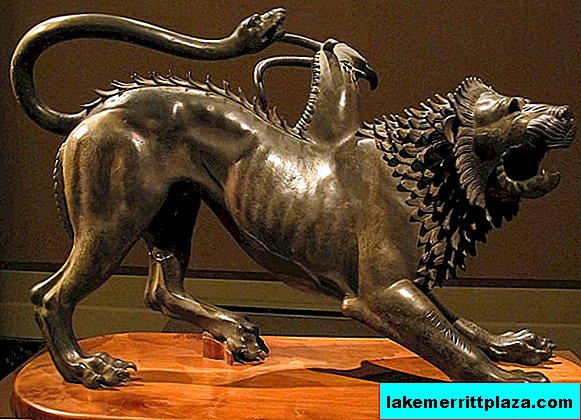
The fantastic figure of a lion with a goat head and tail in the form of a snake is an example of symbolism in sculpture. The animal embodies the triune image of the Great Mother of the Gods: a symbol of birth and feeding - Goat; the symbol of life is Leo; death - the snake. Found in the 16th century, a bronze sculpture 79 cm high is exhibited at the Archaeological Museum of Florence (Museo Archeologico Nazionale di Firenze).
The head of a sullen man
The head of a sullen man (Malvolta), 16.2 cm high, was made in the second half of the fifth century. BC e.
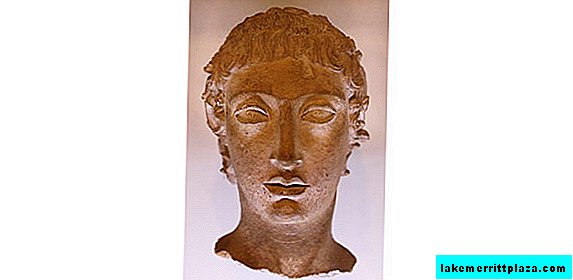
An unapproachable look to a sculptural image is given by eyes, at the same time old and young, a capricious mouth. Art historians find a striking resemblance to "Malvolta" with the head of St. George sculpture by Donatello (Donatello), created by the Renaissance master after millennia. The sculpture found in Wijia is kept in the Roman Museum of Villa Giulia.
Marble relief from the Altar of Peace of Augustus
The ancient Roman masterpiece, Altar of Peace (Ara Pacis Augustae), was erected in honor of the Roman goddess of peace Pax and the victory of Emperor Augustus over Gaul and Spain.

The monumental Altar of Peace was built in Rome in 13 - 9 years. BC. The platform on the Champ de Mars is surrounded by walls, in the center on the steps there is an altar. The construction is considered a striking example of the heyday of the sculptural decoration of the period of principle of Augustus.
The decoration of the Altar is fully represented by various reliefs: historical, mythological, ornamental. The plots are dedicated to separate, interconnected scenes. Images of the emperor, members of his family, subjects differ in portrait similarity. A floral ornament with a realistic interpretation of the leaves, like lace, adorns a cultural monument. The Altar of Peace is located in Rome at via di Ripetta, 190-180
Capitoline Brutus
Part of the bronze sculpture (the head of a man), discovered during excavations in Rome in 1564, made a splash of safety.

Work done in 300 - 275 years. BC, is considered a masterpiece of Etruscan art by the power of expressiveness of the image and technique of execution. One of the oldest sculptures found is allegedly a portrait of the founder of the Roman Republic, Lucius Iunius Brutus (Lucius Iunius Brutus, Bruto Capitolino). The face seems alive thanks to inlaid ivory plates and a colored stone inserted into the pupils. The sculptor conveys the character of an outstanding person. The fighter against tyranny does not give in to difficulties. (Capitoline Museums, Palace of Conservatives).
Statue of Aulus Metella
A bronze statue of orator Aulus Metella (Arringatore), created around 100 BC, was found in 1566 at the bottom of Lake Trasimen.
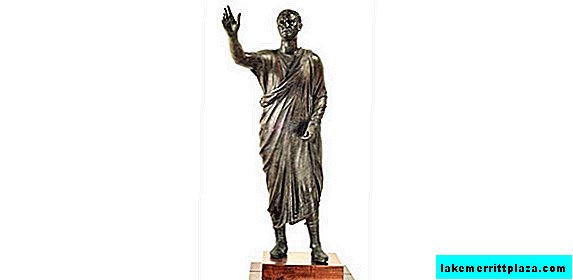
The orator, Roman master Aulus Metellus (Aulus Metellus) extended his hand forward and calls for attention. The portrait image is deprived of idealization, frankly reproduces the nature: a plump figure, a face in wrinkles, a crooked mouth. The work is the first example of an early Roman portrait. The inscription on the border of the toga informs in honor of whom the statue was erected. (National Archaeological Museum, Florence - Museo archeologico nazionale di Firenze).
Statue of Germanicus
Marble sculpture of the end of the 1st century BC. represents the heroized figure of the Roman commander and statesman Germanicus.
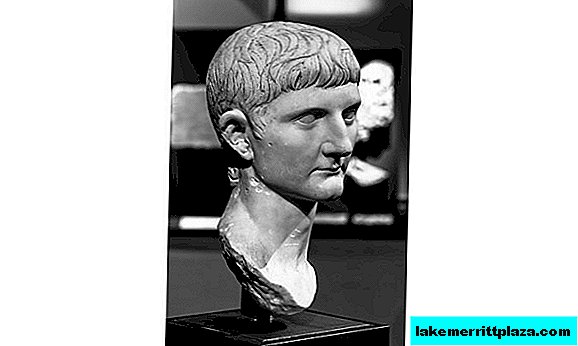
The adopted nephew of Tiberius (the second Roman emperor) was a man of rare beauty and courage. At the age of 34, he became a victim of palace intrigues and was poisoned by slow-acting poison. The eloquent, science-capable commander used the deserved love of the people. The unknown sculptor conveys the youthful grace of the figure and the idealized image of Germanicus, whose death caused the general grief of the Romans. (Paris, Louvre Museum - Musee du Louvre).
Sculpture of Hercules from the Bull Forum
In the XV century, during the excavation of the ancient trading square in Rome (Bull Forum), a gilded bronze sculpture of Hercules was found.

A figure 241 cm high represents the image of the Greek mythological hero Heracles. The work was completed in the 2nd century BC. A slender, muscular athlete defeated Kaka, who stole cows from him. In the right hand of the hero is a lowered club, in the left - the golden apples of the Hesperides. The statue stood in the Temple of Hercules of the Victor, built at the Bull Forum, where cattle were previously sold. (Rome, Capitoline Museums −Musei Capitolini).
Female sculptural portrait of the time Flaviev
The marble portrait of the young Roman woman (1st century AD) reflects the desire of the wives of the emperors, their daughters and noble Romans to show off their beauty and fashion.
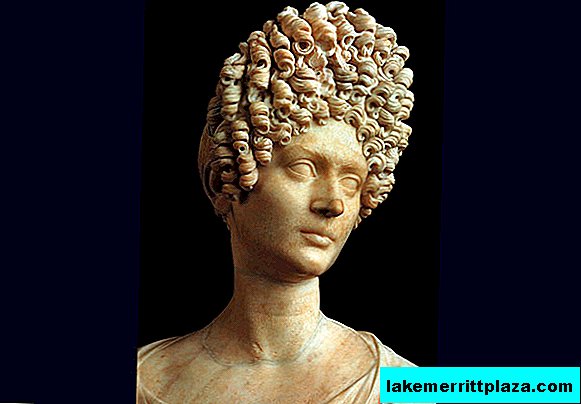
High complex hair, almond-shaped eyes, fluffy eyebrows, a long neck, beautifully defined lips give the image a special poetry. The sculptor has achieved a softening of the appearance due to smoothing the surface of the marble by the technique of implementation using a drill. The work, performed in a special artistic manner, is on display at the Capitoline Museums (Musei Capitolini), Rome.
Portrait of a youth of the time Flaviev
The poetic image of youth and beauty is represented by a marble bust, made at the end of the 1st century A.D.

The individual features of the young man are emphasized by sad eyes, a strong chin, and a beautifully defined mouth. The sculptor skillfully conveys thick hair, eye gloss, skin elasticity, but does not idealize the image. A head turn, a flexible neck, an athletic turn of the shoulders correspond to sculptures of Hellenic art. (London, British Museum - British Museum).
Equestrian statue of Marcus Aurelius

The only equestrian statue of Marcus Aurelius (Marcus Aurelius Antoninus), the last of the five "good emperors" of Rome, that survived to us, was created in the 2nd century. AD The monumental, originally gilded, sculpture represents Marcus Aurelius in the image of a thinker, whom contemporaries called the philosopher on the throne.
The emperor, who does not have a warlike character, is dressed in a tunic, sandals on bare feet - sandals. The idealized appearance of the ruler was identified in the 15th century by minted coins: thick curly hair, prominent cheekbones, bulging eyes. The monument of antiquity survived, because the Christian church took the form of a horseman for the emperor Constantine. (Capitoline Museums - Musei Capitolini - Palace of Conservatives).
Hermitage collection
In the Roman halls of the Hermitage (The State Hermitage Museum) 120 works of ancient masters are presented. One of the best collections in the world has no copies. All exhibits are genuine. The sculptures kept the prototypes of images “alive” and showed the essence of human nature. It is impossible to confuse the soldier emperor Philip Arab (Marcus Iulius Philippus) with the self-righteous co-ruler of Marcus Aurelius - handsome Lucius Verus (Lucius Verus).
In the halls are presented not only portraits of emperors and members of their families, but also sculptures of private individuals. Unnamed masters ideally conveyed the belonging of nature to a social type. Keeper of the Roman portrait of the Hermitage, Ph.D. A. A. Trofimova, calls the bronze bust of an unknown Roman a rare museum exhibit.
The emotional, tragic image of a man with a smart ironic look still causes controversy among specialists about the prototype of the hero. Figurines, busts, sculptures of ancient Rome amaze with a variety of plastic forms and a wealth of characters.

